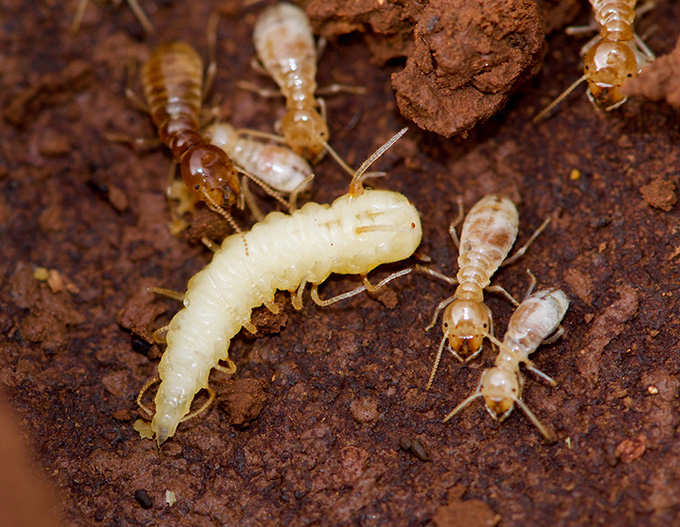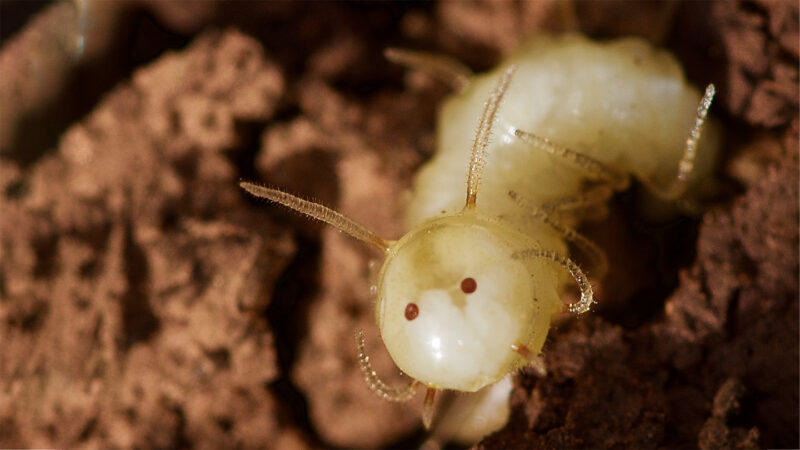Researchers have stumbled upon one of nature’s weirder disguises — fly larvae with butts that mimic termite faces.
Features on their rear end look like a termite’s antennae, eyes and other small structures. This combo resembles a termite’s head. And tentacles around the body look like termite antennae. This helps the young flies blend in among termites — from any angle.
Inside their nest, termites recognize each other through touch. The bodies of blowfly larvae evolved to closely resemble termites. So having a termite-shaped body allows the young flies to survive in termite nests.
Researchers reported these new findings March 10 in Current Biology.
Entomologist Roger Vila went on an expedition to Morocco’s Anti-Atlas Mountains to study insects. There, he was part of a team that spotted something odd. They lifted a stone and found a nest of termites. Known as harvester termites (Anacanthotermes ochraceus), they’re known to kill intruders that enter their nests. But three blowfly larvae were living unharmed amid the termites.
“I immediately thought ‘Wow, this is something cool,’” recalls Vila. “I’ve never seen anything like that.”

How the larvae blend in
The researchers brought the larvae and some termites back to their lab. Vila works at the Institute of Evolutionary Biology in Barcelona, Spain. The group hoped to understand how the impostors get by, unnoticed, among the termites.
The team examined the larvae under the microscope. They also documented how the two species interacted.
Body shape is important, their work revealed. Scent also plays a role.
Underground in the dark, termites use chemical signals to recognize each other. And each colony has a unique scent. If you put a termite from a different colony into the nest, “they kill it immediately,” Vila says.
The blowfly larvae, it turns out, emitted the same smell as the termites they were living among.
It’s unclear how blowfly larvae ended up in the termite nest. The researchers think adults laid their eggs around or inside of the nest. Then the termites “adopted” the impostors. But researchers don’t know why.
The larvae tend to stay in the most populated areas of the nest, the team found. So it’s even possible that the termites might be feeding them.
The blowflies belong to the Rhyncomya genus. But the exact species remains a mystery. A second expedition unearthed just two more blowfly larvae — but no adults. That suggests this nest-sharing is very rare. Finding adult blowflies would help ID the nest-sharing interlopers’ species.
Other Rhyncomya species don’t have these disguises, Vila says. “This tells us that evolution can be very fast under some circumstances.”

















